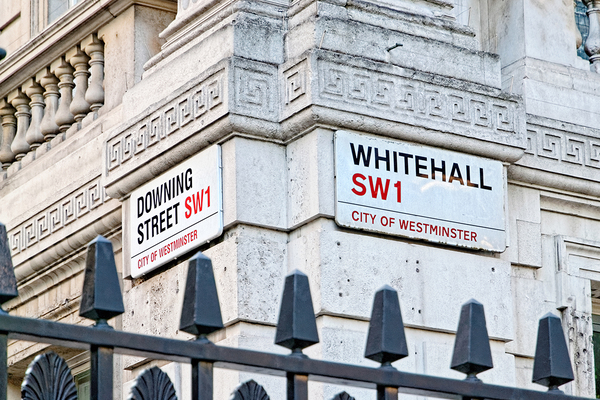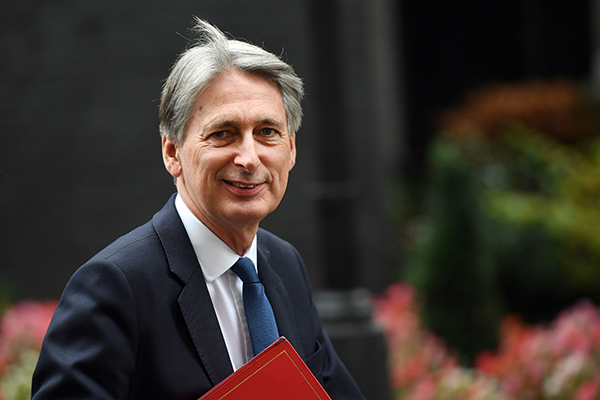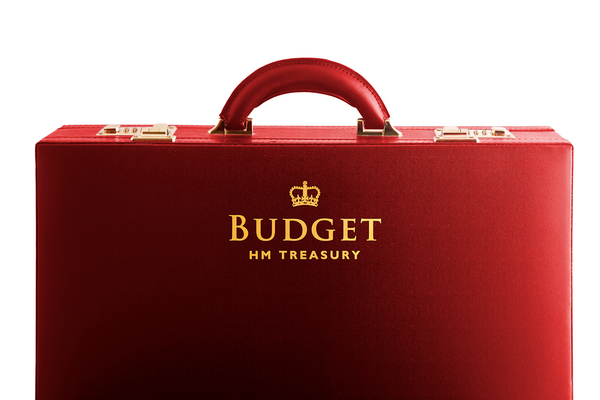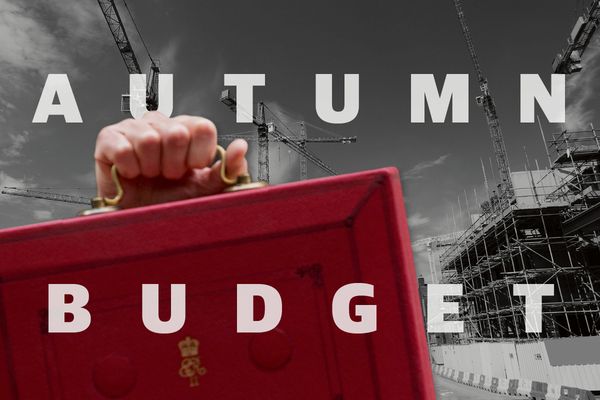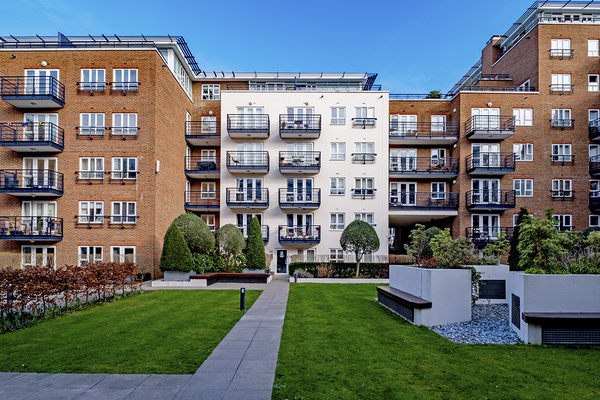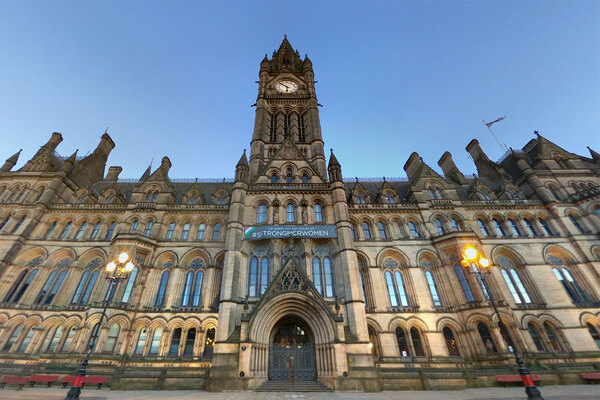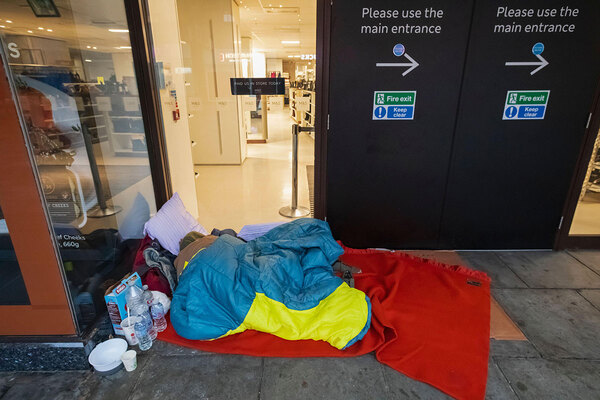You are viewing 1 of your 1 free articles
 Jules Birch
Jules BirchThe government's real priorities are clear
The Budget will cut spending on affordable housing while helping those who would have been able to buy anyway, writes Jules Birch
Philip Hammond’s Budget contains some big numbers and ambitious promises on housing but you don’t have to delve very far to find the real priorities.
Contrast, for example, what’s happening with housing, tax and welfare, two different measures that were heavily predicted and one that was desperately needed.
Stamp duty is being cut, but the chancellor has gone further than the expected holiday by abolishing it completely for first-time buyers of homes worth up to £300,000 or the first £300,000 of homes worth up to £500,000.
The cut applies from now and will cost £2bn by the end of 2022/23.
Problems with Universal Credit are being addressed with measures including the scrapping of the seven-day waiting period, making advances easier to get and allowing continued payment of housing benefit for two weeks after a Universal Credit claim.
The total cost is £1.5bn by 2022/23 and there is another delay to the rollout.
The Universal Credit changes are welcome but will still leave claimants potentially facing destitution and people in work thousands of pounds a year worse off than they would have been under the previous system.
However, the chancellor turned down pleas for a lifting of the benefit freeze, which means local housing allowance for private tenants will stay the same until 2020 regardless of what happens to rents.
That’s a poor substitute for lifting the freeze, especially when higher-than-expected inflation means that he is saving £1.2bn a year more than the Treasury originally forecast.
Needless to say, there was no movement on the benefit cap or the bedroom tax.
The Budget document confirmed the u-turn on the LHA cap for social and supported housing and the cost of reversal is estimated at around £1bn by 2022/23. However, that compares with savings of £2bn forecast when the policy was first announced so the difference begs a few questions.
“Needless to say, there was no movement on the benefit cap or the bedroom tax”
Stamp duty was the big announcement at the end of the speech but it has already begun to unravel thanks to a forecast from the Office for Budget Responsibility (OBR) that it will increase house prices and ultimately benefit existing home owners rather than first-time buyers.
The OBR said: "We assume that a temporary relief would feed one-for-one into house prices, but a permanent one will have twice that effect.
“On this basis, post-Stamp Duty Land Tax (SDLT) prices paid by first time buyers (FTBs) would actually be higher with the relief than without it.
“Thus the main gainers from the policy are people who already own property, not the FTBs themselves. For some potential FTBs with smaller deposits, who are constrained by loan-to-value lending criteria, the relief will enable them to borrow a multiple of their SDLT saving, allowing them to buy properties that they otherwise could not afford – but more expensively."
The announcements on investment also begged lots of questions. Mr Hammond boasted that he was making an extra £15.3bn of new financial support available for housing over the next five years.
That takes total support to £44bn in grants, loans and guarantees that ‘will raise total housing supply by the end of this parliament to its highest level since 1970, on track to reach 300,000 per year’.
“The package includes a mix of sensible sounding measures with some more dubious ones that could just increase housebuilder profits on homes they would have built anyway.”
It’s an impressive number, especially given that Mr Hammond said in his speech that 300,000 is the average he wants, not the peak, but it remains to be seen whether what he’s announced will be remotely enough.
The package includes a mix of sensible sounding measures to support small builders, infrastructure and land assembly with some more dubious ones that could just increase housebuilder profits on homes they would have built anyway.
However, there are still questions about the affordable housing component. Although the Budget confirms the extra £2bn of funding announced at the Conservative conference it’s not clear where that is coming from.
The main Budget table includes £880m of additional investment for local authority housebuilding from 2019/20 to 2021/22.
This seems to refer to councils being able to bid for the lifting of Housing Revenue Account (HRA) borrowing caps ‘in areas of high affordability pressure’.
However, the Office for Budget Responsibility confirms the real source of the money:
‘The £2 billion of spending announced by the Prime Minister in October has been financed by reducing spending on “accelerated construction” and “starter homes” across the four years from 2017-18 to 2020-21.
“The main Budget document does not mention the word ‘social’ either, although it does imply social rent-sized grant.”
The measures in 2019-20 and 2020-21 include additional capital grants to housing associations that, following their reclassification to the private sector, now add to public spending because they leave the public sector.
Under the previous treatment, these would have further raised capital spending, since housing associations typically borrow against the grants to finance higher spending. ‘
That may be a sensible admission that starter homes were a non-starter but it is not new money.
The net effect will be £1.2 bn less spent on affordable housing in the next two years and £1.1 bn more in 2019/20 and 2020/21/.
"There are some tentative Budget moves on land"
The main Budget document does not mention the word ‘social’ either, although it does repeat the Tory conference briefing that the £2bn will generate 25,000 homes, which does imply social rent-sized grant.
It does confirm what looks that a pilot of the housing association right to buy will go ahead from July 2018 – but it’s hard to read whether this doing the bare minumm or forging ahead with something that will stoke fears that the high value asset levy is still lurking in the undergrowth.
Funding is put at £200m in the main Budget document but just £85m in the OBR report and the OBR also says that secondary legislation setting out the details is ‘pending’.
Finally, there are some tentative Budget moves on land. As with tax and welfare and investment, these fall well short of the ‘big and bold’ measures many were hoping for.
“Reform of the green belt is again ruled out but there is support for greater use of compulsory purchase powers”
However, there are some intriguing elements that combine schemes with real long-term potential (support for proposals for a million new homes in the Cambridge-Milton Keynes-Oxford corridor) and some that we’ve heard too many times before (five locally-led garden towns).
Reform of the green belt is again ruled out but there is support for greater use of compulsory purchase powers for site assembly on land around transport hubs.
And deregulation could be taken even further by extending permitted development rights to allow the demolition of offices for homes and making it easier to convert retail and employment land into housing.
Conservative MP Oliver Letwin will lead a review panel looking at build out rates for land with planning permission.
It’s about time but it sounds like a way of looking like they are doing something.
“It does not take a genius to realise that the benefits of the stamp duty cut will go to people who could afford to buy anyway.”
With all those housing announcements, there was precious little for private renters to celebrate apart from a pitifully weak consultation on the barriers to landlords offering longer, more secure tenancies.
It does not take a genius – or even the OBR – to realise that the benefits of the stamp duty cut will go to people who could afford to buy anyway, parents who will have to withdraw less from the Bank of Mum and Dad – and (yet again) existing home owners.
Jules Birch, award-winning blogger
KEY BUDGET MEASURES AT-A-GLANCE
- Investment of £44bn in housebuilding in capital funding, loans and guarantees over the next five years to boost supply of skills, resources and land
- Commitment to be building 300,000 homes a year by mid-2020s
- £1.5bn package of changes to Universal Credit announced. This includes the scrapping of the seven-day waiting period at the beginning of a claim, making a full month’s advance available within five days of a claim for those that need it and allowing claimants on housing benefit to continue claiming for two weeks
- Lift council borrowing caps in "high-demand areas"
- A £125m increase over two years in Targeted Affordability Funding for Local Housing Allowance claimants in the private sector struggling to pay their rent
- New money into Home Builders Fund
- Extra £2.7bn for Housing Infrastructure Fund
- Invest £400m in estate regeneration
- £1.1bn on unlocking strategic sites
- Stamp duty for first time buyers on properties worth up to £300k will be axed, while the first £300k on properties worth up to £500k will also be scrapped
- Three new Housing First pilots announced for West Midlands, Manchester and Liverpool
- Councils to be given the power to charge 100% council tax premium on empty properties
- Government will launch a consultation to barriers to longer tenancies in the private rented sector
- £38m for Kensington & Chelsea Council for mental health and counselling services, regeneration projects in areas surrounding Grenfell Tower and a new community space
- Invest in five new garden towns
- £125m increase in Targeted Affordability Funding for Local Housing Allowance claimants in the private sector struggling to pay rent
